 Facebook
Facebook
 X
X
 Instagram
Instagram
 TikTok
TikTok
 Youtube
Youtube
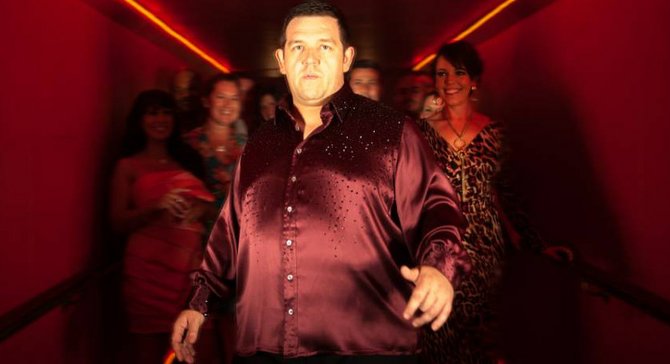
Nick Frost — perhaps best known as the Oliver Hardy to Simon Pegg’s Stan Laurel in the Cornetto trilogy (Shaun of the Dead, Hot Fuzz, The World’s End) — salsas into the spotlight in the romcom/sports flick Cuban Fury.
Frost plays Bruce Garrett, a child-prodigy dancer who fled the floor after an adolescent trauma. He’s been hugging the wall ever since, but when he learns that his pretty new boss likes to dance, well...
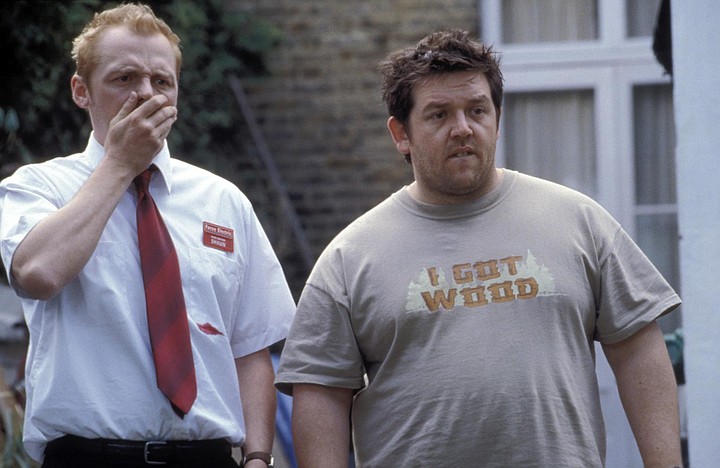
Matthew Lickona: The IMDb page for Cuban Fury notes that the script is based on an original idea of yours. What was it?
Nick Frost: It was about a normal, everyday man who falls in love with a beautiful woman and woos her using the power of dance. I think it was kind of that simple. There were other things within it, though — things like, “It’s not necessarily how you look that makes you attractive. It can be about passion, and the fact that you are nice, and funny. Sometimes, that’s more than enough.” It was an idea I’d had for ages. The one-line pitch in my head was, “Do you want to do a film where you dance a lot?” It seemed ridiculous, but I knew my producer, Nira Park, would kind of love it. I never told anyone, because I thought if I did, I might just have to do the film. But the idea kept popping up, and one night when I was slightly the worse for wear and my defenses were down, I wrote an email to Nyra pitching the whole idea and then fell asleep with all my clothes on. Sure enough, in the morning, there was a message from Nira saying, “Hey, this is great. Let’s do this.”
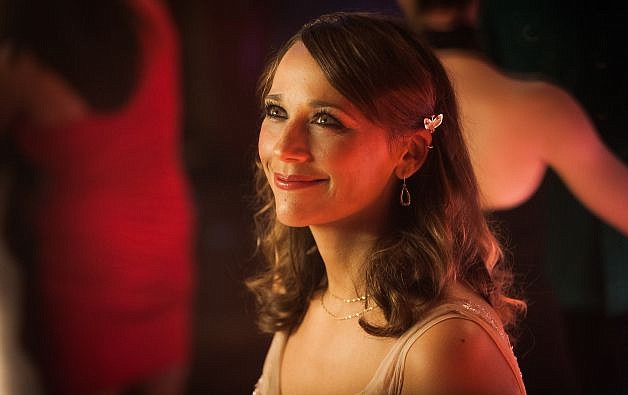
ML: Did you have much involvement with the writing beyond that?
NF: No. I had an idea for who the characters should be, and for the shape — technically, it’s a similar shape to any sports movie, including a sports montage. It structures itself, really. But we met this lovely man, John Brown, and we liked him a lot and he liked us. I think you can’t be too precious about an idea in terms of letting it go. If you are, then you might as well write it yourself, and I didn’t want to write this. Writing takes so much time — Simon Pegg and I found that out after spending two and a half years writing Paul. During that not time, you’re not acting. Essentially, you’re not getting paid. I liked the idea of coming up with an idea and then working with a writer that we like.

ML: Had you danced much prior to making this?
NF: Not at all. I’m a house music fan, so my dancing is essentially a fist pump and some foot-stomping. I’d never danced “in hold” before.
ML: Do clubs like the one you visit in the film actually exist?
NF: Absolutely. That was part of my training, to go to clubs and see how the dancing I’d learned in the classroom played out there.
ML: Yeah, when you show up in the club, it looks a little twerkier than what you learned in class.
NF: That club had different musical genres under one roof. You had one room that was playing Kizomba, which is essentially just a chance for a man and a woman to rub themselves together. Then you had a Cuban room, a cross-body room, and a reggae room, which is more of a Jamaican dance hall, really.

ML: There are a number of ’80s film references — The Goonies, Back to the Future, Scarface... and when you say, “Salsa. Why did it have to be salsa?” you’re playing on Indiana Jones. And then you top off the ’80s vibe by featuring a Prius with a tape deck to set up the mixtape element.
NF: I think that was the thing that took us the most amount of time to find — a Prius with a tape deck. But we found one. I think there’s a romance about mix tapes. Plus, Bruce has vinyl, and he can’t do vinyl to CD. But he can do vinyl to tape. I think the romance is something that will be lost on anyone born after 1986. But the 40-year-olds, they’ll understand.
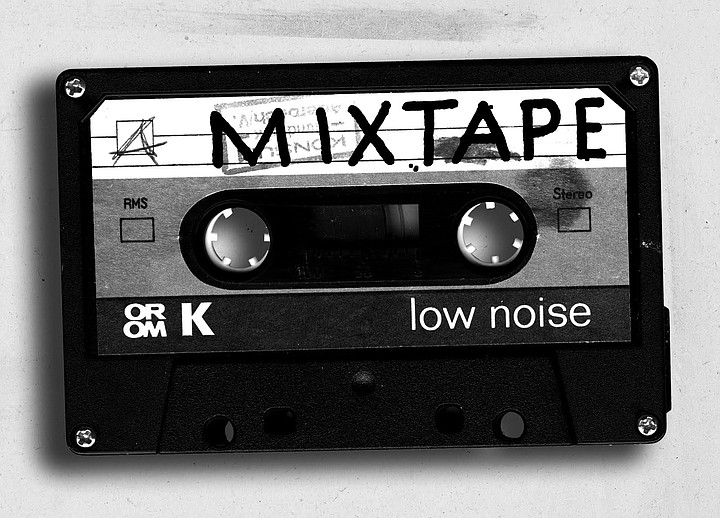
ML: Tell me about the dance fight.
NF: We tried to shoot it like one of the fights in The Bourne Identity — instead of dancing, Bruce and Drew might as well have box cutters, you know? If you see it again, you’ll realize that they’re both kind of shit at it. No matter how good Bruce is, when he has the dance-off, he’s terrible. There’s a lot about that scene that I like. When Drew says, “Fuck off Bruce; I can’t do this every lunch,” that kind of makes me think they did it yesterday as well. And I love that they talk about the fight happening at lunch, but when Bruce defeats Drew, you can see there’s this beautiful orange sunset in the background. The fight has lasted all afternoon, which is kind of epic.

ML: It’s a clever twist on the “nerd with his secret passion” story, because ballroom dance is one of the few secret passions that almost always involves girls.
NF: Absolutely. I think all of us nerds are a little bit romantic. There’s all the unrequited love.
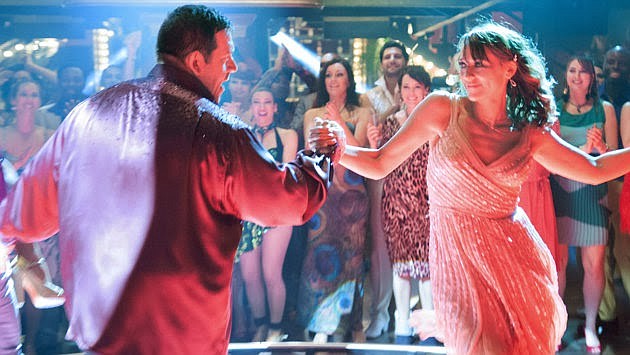
ML: There is so much out there these in terms of body issues. I kept thinking as I watched, “This would not be as much fun if Nick Frost were not a big guy.”
NF: I think it’s a media-driven circus, essentially — to have us all buy smaller jeans. If you’re happy, then that’s surely what life is all about. I don’t think [size] should be an issue. Bruce Garrett is a big man; that’s how he is, that’s who he is. I think you have to have people on television and in the media who are a fair reflection of our society. You’re force-fed the lie that [size] 00 is the norm.
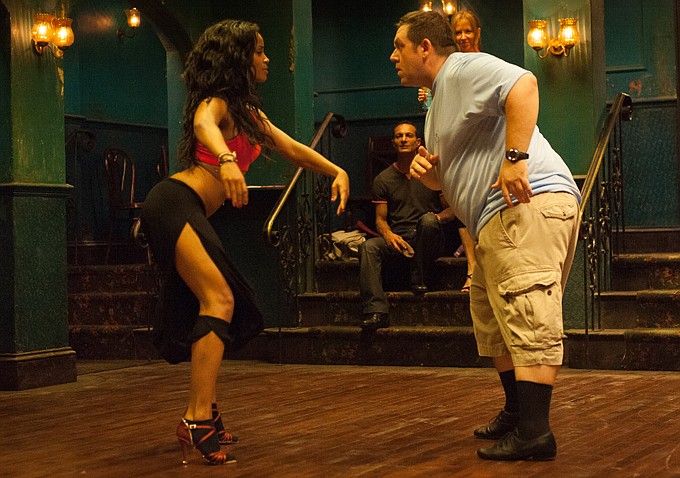
ML: To me, the neat trick is walking the line: proclaiming the normalcy of Bruce Garrett — a big guy who dances really well — and then mining the comedic element in seeing this big guy be so nimble, outdancing the tall skinny guy.
NF: I think that if I’ve done my job right, you shouldn’t notice it, to be perfectly honest.


Nick Frost — perhaps best known as the Oliver Hardy to Simon Pegg’s Stan Laurel in the Cornetto trilogy (Shaun of the Dead, Hot Fuzz, The World’s End) — salsas into the spotlight in the romcom/sports flick Cuban Fury.
Frost plays Bruce Garrett, a child-prodigy dancer who fled the floor after an adolescent trauma. He’s been hugging the wall ever since, but when he learns that his pretty new boss likes to dance, well...

Matthew Lickona: The IMDb page for Cuban Fury notes that the script is based on an original idea of yours. What was it?
Nick Frost: It was about a normal, everyday man who falls in love with a beautiful woman and woos her using the power of dance. I think it was kind of that simple. There were other things within it, though — things like, “It’s not necessarily how you look that makes you attractive. It can be about passion, and the fact that you are nice, and funny. Sometimes, that’s more than enough.” It was an idea I’d had for ages. The one-line pitch in my head was, “Do you want to do a film where you dance a lot?” It seemed ridiculous, but I knew my producer, Nira Park, would kind of love it. I never told anyone, because I thought if I did, I might just have to do the film. But the idea kept popping up, and one night when I was slightly the worse for wear and my defenses were down, I wrote an email to Nyra pitching the whole idea and then fell asleep with all my clothes on. Sure enough, in the morning, there was a message from Nira saying, “Hey, this is great. Let’s do this.”

ML: Did you have much involvement with the writing beyond that?
NF: No. I had an idea for who the characters should be, and for the shape — technically, it’s a similar shape to any sports movie, including a sports montage. It structures itself, really. But we met this lovely man, John Brown, and we liked him a lot and he liked us. I think you can’t be too precious about an idea in terms of letting it go. If you are, then you might as well write it yourself, and I didn’t want to write this. Writing takes so much time — Simon Pegg and I found that out after spending two and a half years writing Paul. During that not time, you’re not acting. Essentially, you’re not getting paid. I liked the idea of coming up with an idea and then working with a writer that we like.

ML: Had you danced much prior to making this?
NF: Not at all. I’m a house music fan, so my dancing is essentially a fist pump and some foot-stomping. I’d never danced “in hold” before.
ML: Do clubs like the one you visit in the film actually exist?
NF: Absolutely. That was part of my training, to go to clubs and see how the dancing I’d learned in the classroom played out there.
ML: Yeah, when you show up in the club, it looks a little twerkier than what you learned in class.
NF: That club had different musical genres under one roof. You had one room that was playing Kizomba, which is essentially just a chance for a man and a woman to rub themselves together. Then you had a Cuban room, a cross-body room, and a reggae room, which is more of a Jamaican dance hall, really.

ML: There are a number of ’80s film references — The Goonies, Back to the Future, Scarface... and when you say, “Salsa. Why did it have to be salsa?” you’re playing on Indiana Jones. And then you top off the ’80s vibe by featuring a Prius with a tape deck to set up the mixtape element.
NF: I think that was the thing that took us the most amount of time to find — a Prius with a tape deck. But we found one. I think there’s a romance about mix tapes. Plus, Bruce has vinyl, and he can’t do vinyl to CD. But he can do vinyl to tape. I think the romance is something that will be lost on anyone born after 1986. But the 40-year-olds, they’ll understand.

ML: Tell me about the dance fight.
NF: We tried to shoot it like one of the fights in The Bourne Identity — instead of dancing, Bruce and Drew might as well have box cutters, you know? If you see it again, you’ll realize that they’re both kind of shit at it. No matter how good Bruce is, when he has the dance-off, he’s terrible. There’s a lot about that scene that I like. When Drew says, “Fuck off Bruce; I can’t do this every lunch,” that kind of makes me think they did it yesterday as well. And I love that they talk about the fight happening at lunch, but when Bruce defeats Drew, you can see there’s this beautiful orange sunset in the background. The fight has lasted all afternoon, which is kind of epic.

ML: It’s a clever twist on the “nerd with his secret passion” story, because ballroom dance is one of the few secret passions that almost always involves girls.
NF: Absolutely. I think all of us nerds are a little bit romantic. There’s all the unrequited love.

ML: There is so much out there these in terms of body issues. I kept thinking as I watched, “This would not be as much fun if Nick Frost were not a big guy.”
NF: I think it’s a media-driven circus, essentially — to have us all buy smaller jeans. If you’re happy, then that’s surely what life is all about. I don’t think [size] should be an issue. Bruce Garrett is a big man; that’s how he is, that’s who he is. I think you have to have people on television and in the media who are a fair reflection of our society. You’re force-fed the lie that [size] 00 is the norm.

ML: To me, the neat trick is walking the line: proclaiming the normalcy of Bruce Garrett — a big guy who dances really well — and then mining the comedic element in seeing this big guy be so nimble, outdancing the tall skinny guy.
NF: I think that if I’ve done my job right, you shouldn’t notice it, to be perfectly honest.
Comments